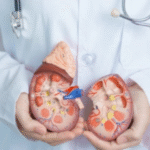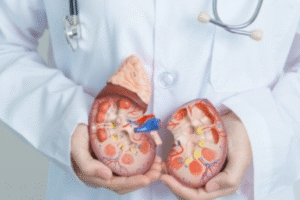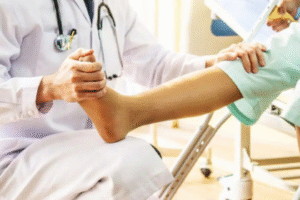Cancer remains one of the most daunting health challenges of our time, but the good news is that prevention and early detection can make a significant difference. By understanding the guidelines for cancer prevention and early detection, we can take proactive steps to protect our health and catch potential issues before they become life-threatening.
I’ve spent years researching and writing about health, and I’ve seen firsthand how empowering it is to have the right information. In this article, I’ll share essential guidelines that can help you reduce your cancer risk and recognize early warning signs. Let’s dive into the strategies that could save your life or the life of someone you love. Integrating a comprehensive workout program into your routine can further enhance your overall health and support cancer prevention efforts.
Understanding Cancer Prevention
Preventing cancer involves making informed choices about lifestyle and habits. Through evidence-based strategies, one can significantly lower the risk of developing cancer.
Lifestyle Changes
Regular exercise, maintaining a healthy weight, and quitting smoking are vital in cancer prevention. Physical activity helps regulate hormones and boosts immune function, decreasing cancer risk. In addition, 150 minutes of moderate exercise per week aids in maintaining a healthy body weight, which plays a crucial role in cancer prevention. Eliminating smoking significantly reduces the risk of lung, throat, and other cancers as it removes exposure to harmful tobacco chemicals.
Dietary Recommendations
A balanced diet with an emphasis on fruits, vegetables, and whole grains helps in cancer prevention. Consuming at least five servings of fruits and vegetables daily provides essential vitamins, minerals, and antioxidants. Reducing red and processed meat intake lowers the risk of colorectal cancer. Integrating fiber-rich foods and limiting alcohol consumption further supports a healthy diet, improving overall cancer risk reduction.
Avoiding Carcinogens
Limiting exposure to carcinogens, substances that can lead to cancer, is essential. Common carcinogens include tobacco smoke, asbestos, and ultraviolet radiation. Using sunscreen, wearing protective clothing, and avoiding tanning beds decrease skin cancer risk. Minimizing exposure to harmful chemicals at home and work, such as through proper ventilation and using protective equipment, further mitigates cancer risk.
Preventative measures and making informed lifestyle changes create a strong foundation for reducing the risk of developing cancer.
Importance of Early Detection
Early detection plays a critical role in improving cancer survival rates. Identifying cancer at its earliest stages allows for more treatment options and better outcomes.
Regular Screenings
Regular screenings detect cancer before symptoms appear. Mammograms, Pap smears, and colonoscopies top the list for effectiveness. Various cancers, like breast and colorectal cancers, show higher survival rates when detected early. For instance, the five-year survival rate for early-stage breast cancer reaches approximately 99%, according to the American Cancer Society. Schedule screenings based on your age, gender, and risk factors for maximum benefit.
Genetic Testing
Genetic testing identifies hereditary cancer risks. Genes like BRCA1 and BRCA2, when mutated, increase the risk for breast and ovarian cancers. Testing informs individuals if they carry these mutations. Actionable next steps, such as increased surveillance or preventive measures, can then be taken. Discuss with a genetic counselor to understand your risk and make informed decisions about testing.
Recognizing Symptoms
Recognizing symptoms leads to early diagnosis. Unexplained weight loss, persistent fatigue, and unusual lumps warrant medical attention. Symptoms often depend on the cancer type. For example, persistent cough and difficulty breathing may indicate lung cancer. Awareness of changes in the body helps detect cancer early. Consult a healthcare provider if you notice unusual symptoms to take timely action.
Early detection provides a significant advantage in fighting cancer. Through regular screenings, genetic testing, and symptom recognition, I can improve my chances of successful treatment if cancer develops.
Guidelines for Different Types of Cancer
Understanding guidelines for various cancers helps in their prevention and early detection. Here’s what you need to know:
Breast Cancer
Annual mammograms are essential for women starting at age 40. Those at higher risk, such as women with a family history, may need earlier screenings. Clinical breast exams every three years for women in their 20s and 30s, and annually for those 40 and over, are recommended. Self-exams can help in noticing changes like lumps or skin changes. Lifestyle factors such as maintaining a healthy weight and limiting alcohol intake can reduce risk.
Prostate Cancer
Men should start discussing prostate-specific antigen (PSA) testing with their doctor at age 50, or 45 if they’re at higher risk, such as African American men or those with a family history. Digital rectal exams (DRE) can be part of the screening process. Healthy lifestyle choices, including a balanced diet rich in fruits and vegetables, exercise, and regular medical check-ups, can contribute to lower risk.
Colorectal Cancer
Screening for colorectal cancer should begin at age 45 for average-risk individuals. Tests like fecal occult blood tests (FOBT), sigmoidoscopy, or colonoscopy are effective screening tools. Those with a family history or other risk factors might need earlier and more frequent screenings. Diets high in fruits, vegetables, and whole grains, along with regular physical activity, are recommended for reducing risk.
Role of Healthcare Providers
Healthcare providers are crucial in cancer prevention and early detection. They offer professional guidance and support to help patients navigate screening, prevention, and education.
Professional Recommendations
Healthcare providers deliver specific screening and prevention recommendations based on patient risk factors. For example, they suggest annual mammograms for women over 40, colonoscopies every 10 years for adults over 45, and regular Prostate-Specific Antigen (PSA) tests for men over 50. These recommendations evolve with ongoing research and guidelines from authoritative bodies like the American Cancer Society.
Patient Education
Providers educate patients about cancer risks and prevention. They inform patients about the importance of a healthy lifestyle, emphasizing exercise, a balanced diet, and avoiding tobacco. Patients receive guidance on recognizing early symptoms and understanding their family history’s impact on cancer risk. Regular check-ups and open communication foster an informed and proactive approach to cancer prevention.
Access to Resources
Healthcare providers connect patients with essential resources for cancer prevention and early detection. These resources include screening programs, nutritional counseling, and smoking cessation support. Providers guide patients to community programs, support groups, and reliable online information, ensuring they have access to comprehensive care and support systems.














